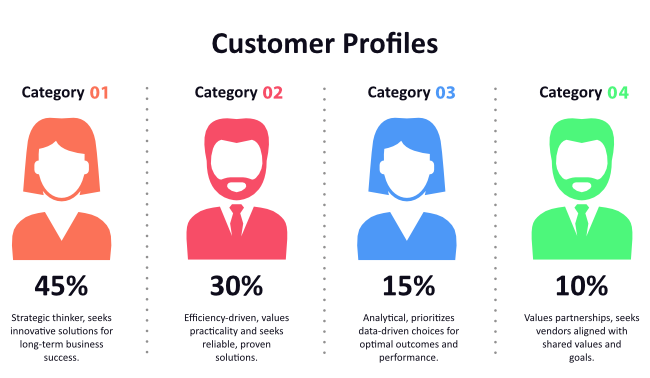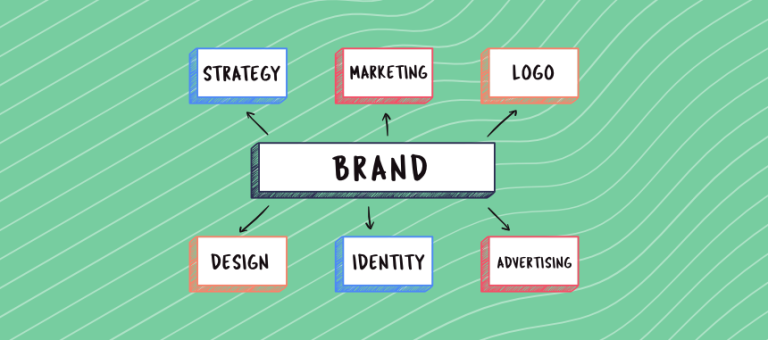In the intricate dance of sales, the line between persuasion and pushiness can be razor-thin.
This article delves into the strategies and techniques that can transform the sales process into a collaborative exchange, where customers feel empowered rather than pressured.
So, let’s get started with answering how to get the sale without being pushy.
Starting with…
1. Build a strong foundation
Understand who your customers are
A successful salesperson knows that the foundation is laid in a solid understanding of your customer.
This understanding goes beyond mere demographics; it delves into the nuanced realm of needs and preferences.

Recognizing the unique challenges, aspirations, and pain points of your potential client positions you not as a mere seller but as a solution provider.
Methods for collecting information
Before embarking on your sales pitch, invest time in comprehensive research. Sales professionals can leverage social media, customer reviews, and market trends to paint a detailed portrait of your prospective buyer.
Engage in conversations, online and offline, to unearth insights into their motivations and concerns.
The goal is to tailor your approach, ensuring that your product or service aligns seamlessly with their needs.
Establish trust with customers
Trust is the currency of successful sales, and establishing it begins with building a genuine connection.
Customers are not just seeking products; they’re seeking long-term support in exchange for their purchase. Therefore, the significance of authentic rapport cannot be overstated.
How to build trust with customers
Active listening emerges as a cornerstone in fostering trust. Demonstrate a sincere interest in what your customer has to say, allowing them to express their needs.
Beyond listening, find common ground. Whether it’s a shared experience, a mutual acquaintance, or a similar professional background, these commonalities create a bridge, fostering a sense of connection.
2. Master the art of persuasion
Focus on value, rather than price
Selling on price alone often commoditizes your offering, positioning it as interchangeable with your competitors.
On the contrary, selling on value involves communicating the unique benefits and advantages that set your product or service apart.
This approach not only justifies the cost but transforms the purchasing decision into an investment in quality and satisfaction.
How to demonstrate value to customers
To convey value effectively, focus on the outcomes and experiences your product delivers.
For instance, instead of merely stating the specifications of a camera, highlight how its advanced features capture moments with unparalleled clarity, turning ordinary memories into cherished masterpieces.
Draw attention to the long-term benefits, whether they be time saved, enhanced productivity, or an improved quality of life.
Highlight benefits, not features
While features describe what a product or service does, benefits demonstrate how it directly solves a problem or fulfils a need for customers.
By highlighting benefits, you eliminate the friction of customers trying to figure out how your product solves their problems.
Instead you connect the dots for them, which is a hell of a lot more persuasive than a list of contextless features.
How to frame features as benefits
Imagine that you’re selling a software with robust analytics features, then emphasize how these analytics empower the customer to make data-driven decisions swiftly, enhancing efficiency and driving business growth.
By translating features into tangible benefits, you bridge the gap between what your product does and why it matters to the customer.
Use social proof
Testimonials, case studies, and endorsements wield a unique power—they provide a real-world narrative of your product or service in action.
Testimonials from satisfied customers serve as personal endorsements, offering a glimpse into the positive experiences others have had.

Meanwhile, detailed case studies delve into the challenges faced by customers and how your offering provided a solution.
Endorsements from industry influencers or recognized authorities shows leads you have a successful track record.
So, if you’re asking yourself how to make the sale without being pushy, proof of a great track record can be your answer.
Where to show social proof
Display them prominently on your website, in marketing materials, or during presentations.
The collective voice of satisfied customers becomes a chorus of credibility, resonating far beyond the confines of your sales pitch.
As a result, social proof becomes a cornerstone in the art of persuasion, turning skeptics into believers and casual interest into confident commitments.
3. The soft close
Ask open-ended questions
Unlike closed-ended questions that elicit simple ‘yes’ or ‘no’ responses, open-ended questions invite customers to share their thoughts, concerns, and desires in a more expansive manner.
Examples of open-ended questions
- Can you share more about the specific goals you’re aiming to achieve with our product/service?
- What challenges are you currently facing in your [industry/business] that you hope our solution can address?
- How do you envision our product fitting into your existing workflow?
By encouraging customers to elaborate on their requirements, open-ended questions lay the groundwork for a more personalized sales strategy.
Subtly trial closes throughout your conversation
Instead of waiting until the end of the pitch to ask for a sale, trial closes are subtle checkpoints that allow you to assess the customer’s receptiveness throughout the conversation.
They provide an opportunity for the customer to express any reservations or concerns early on, allowing you to address them promptly (which is a win-win).
Simultaneously, they gently nudge the customer towards considering the idea of making a purchase, paving the way for a smoother transition when the actual closing moment arrives.
Examples of trial closes
- Based on what we’ve discussed so far, can you see how our product/service might benefit your [specific need]?
- How does our solution align with your expectations for [desired outcome]?
- If we were able to address [customer’s primary concern], would you be ready to move forward?
4. Respectful persistence
Follow-up strategically
This is likely the most important steps in learning how to ask for the sale without being pushy.
One of the biggest turn-offs for leads is them feeling you’re in a rush to close the deal. Instinctively, they’ll want to wait until they’re ready to buy without being hounded.
Effective follow-up is a delicate balance between maintaining engagement and respecting the customer’s space.
It reinforces your commitment to their needs while avoiding the pitfalls of persistence that may be perceived as pushy.
A well-timed and thoughtful follow-up demonstrates dedication and can be the catalyst for converting a lead into a loyal customer.
Tips on follow up timing and methods
- Personalize Timing: Consider the nature of your product or service and the customer’s buying cycle. Tailor your follow-up to align with these considerations, avoiding generic timelines.
- Vary Communication Channels: Mix up your communication channels to cater to individual preferences. Whether it’s a personalized email, a brief phone call, or even a thoughtful message on LinkedIn, diversifying your approach ensures a more engaging interaction.
Offer options, not ultimatums
By offering choices, you empower the customer in the decision-making process, allowing them to align their preferences with the solutions you provide.
This sense of control not only fosters a positive experience but also increases the likelihood of closing a sale.
Also, if a customer expresses reservations one option, you’re able to navigate around those concerns by offering an alternative.
Examples of offering options
- Plan A focuses on [specific features], whilst Plan B focuses on [different features].
- Standard delivery or Express delivery for a faster turnaround.
- Monthly, quarterly or annual payment plans.
Offering options to leads makes the sales process more collaborative, and ensures that they feel accomodated.
You can also couple this with a sense of urgency, say a timed discount on one of the options which may make it more alluring.
Wrapping up: How to ask for the sale without being pushy
So, we’re hoping we’ve given you some great insight on how to ask for the sale without being pushy.
Respectful persistence, manifested through strategic follow-up and the presentation of options, ensures a lasting connection with diverse buyer personas.
Remember, the journey from pitch to purchase is not a solitary event but a dynamic relationship.
As you embark on your sales endeavors, let empathy guide your approach, turning each interaction into a meaningful step toward mutual success.




